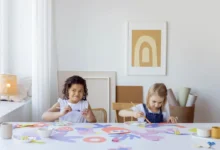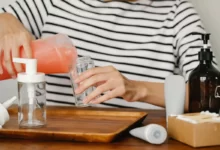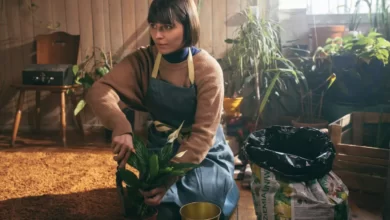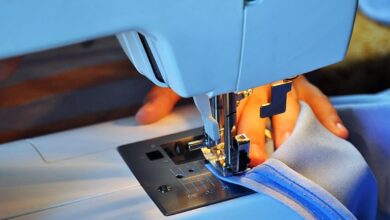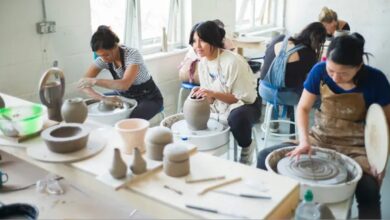In a world that’s becoming increasingly conscious of its environmental footprint, the concept of crafting with recycled materials has gained remarkable popularity. It’s more than just a trend – it’s a creative and responsible way of turning what might be considered trash into beautiful pieces of art. Recycled materials hold an immense potential for DIY projects that not only help reduce waste but also add a unique and personal touch to your home decor. In this article, we’ll delve into the fascinating world of crafting with recycled materials, exploring various ideas and techniques that can help you transform discarded items into stunning art pieces.
The Beauty of Recycled Materials
In a society where ease frequently takes precedence over environmental mindfulness, the practice of creating art using recycled materials arises as a seamless fusion of inventiveness and ecological consciousness. Frequently pushed aside as discarded waste, recycled materials carry an intrinsic allure that becomes apparent when they are reshaped into art. This charm isn’t solely rooted in what meets the eye; rather, it resides in the profound interplay between artistic expression and our duty to the Earth.
Discovering the Aesthetics in the Ordinary
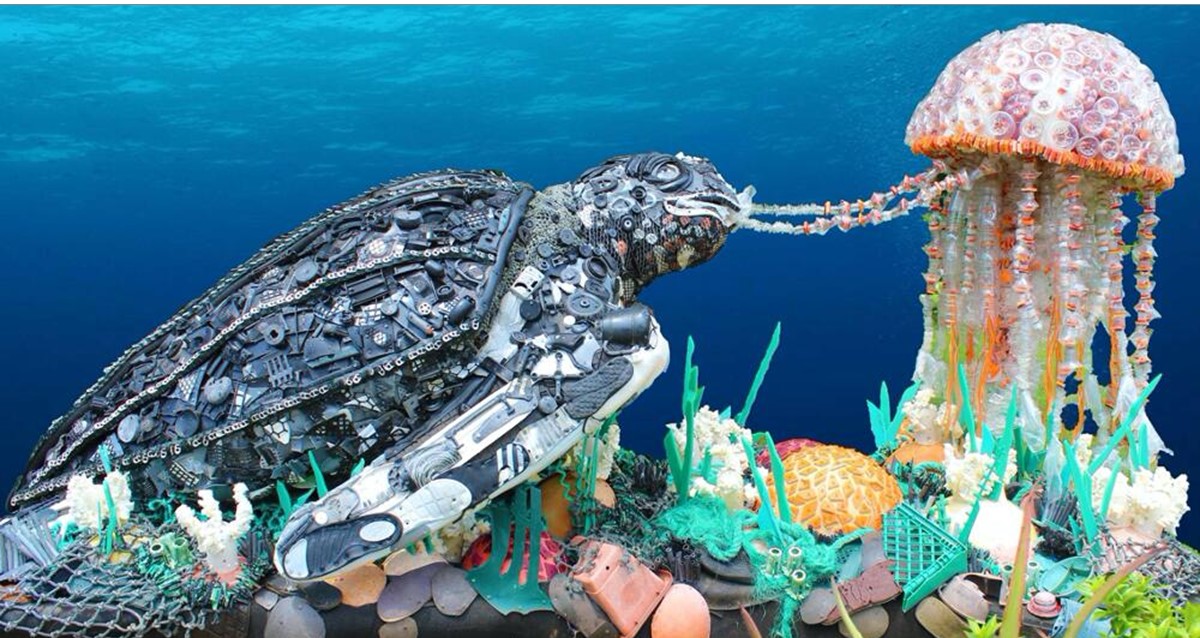
Recycled materials bring forth a unique challenge to the artist – to extract beauty from the mundane. It’s a journey of discovery where newspapers, magazines, and cardboard morph into stunning paper art; glass bottles metamorphose into elegant vases, and electronic components dance together as futuristic sculptures. The magic doesn’t rest solely in the finished creation; it’s also in the process of transforming what might be considered trash into a treasure trove of artistic expression.
Textures Tell Tales
The textured tapestry of recycled materials adds depth and character to each creation. Imagine a collage crafted from pages of vintage magazines, each piece carrying whispers of history and stories from another era. The tactile sensation of running your fingers over the carefully layered paper in a papier-mâché sculpture adds an intimate connection to the work. The amalgamation of textures – rough, smooth, glossy, and matte – creates a symphony for both the eyes and the touch.
Colors that Resonate
Recycled materials, often showcasing a spectrum of colors acquired from their previous lives, infuse art with a rich and diverse palette. The earthy browns of weathered cardboard, the brilliant greens and blues of glass bottles, the metallic sheen of discarded circuit boards – each hue carries a story of its origin. These colors interplay with light, casting captivating shadows and reflections that render each creation dynamic and multi-dimensional.
Embracing Imperfections
In the world of crafting with recycled materials, imperfections aren’t flaws; they’re an integral part of the charm. A vintage glass jar repurposed into a vase may bear the faint marks of its history, giving it an authentic character that no mass-produced item can replicate. The worn edges of fabric scraps that come together in a quilt remind us that beauty can emerge from what others might consider scraps.
Art as a Catalyst for Change
Beyond the aesthetics, crafting with recycled materials carries a message of sustainability. It’s a tangible reminder that our choices matter – that we can repurpose and reimagine, transforming the trajectory of waste and contributing positively to our environment. Each art piece becomes a beacon of change, inspiring others to look beyond convenience and embrace creativity as a force for good.
A New Perspective
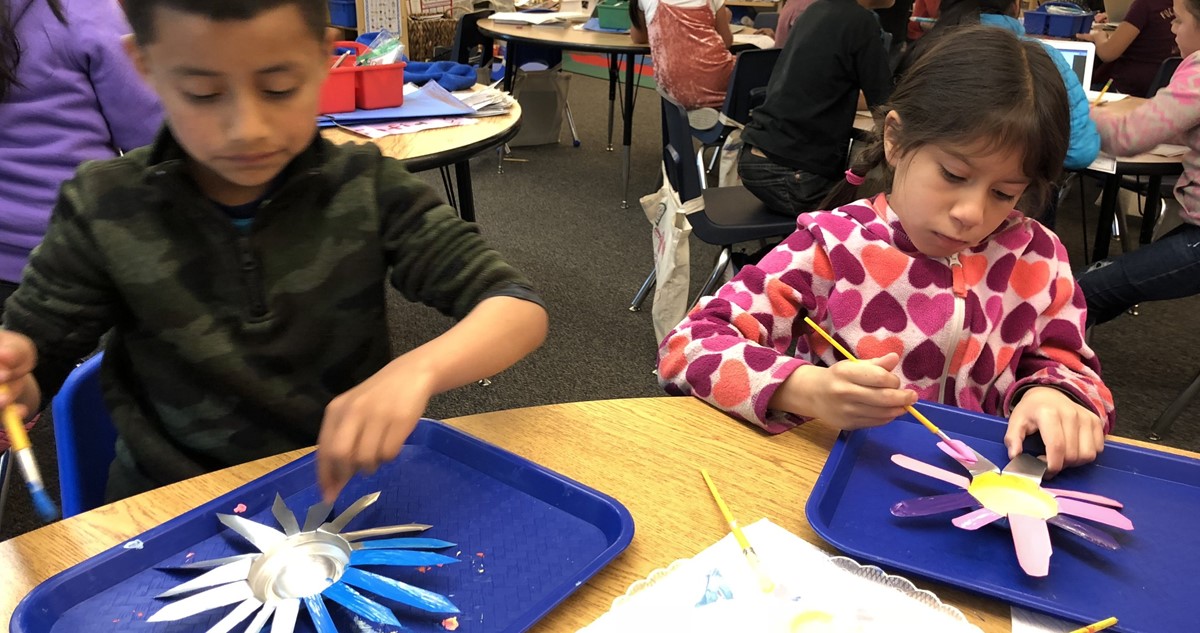
Crafting with recycled materials prompts a shift in perspective. It encourages us to see beyond the surface, to perceive potential where others might see disposability. It opens the door to a world where limitations become opportunities and where innovation finds its roots in necessity.
Ideas for Crafting with Recycled Materials
- Paper Art: Old newspapers, magazines, and cardboard can find new life as intricate paper art. Consider creating collages, origami, or even papier-mâché sculptures. The different textures and colors of recycled paper add depth and character to your creations.
- Bottle and Jar Vases: Glass bottles and jars can be transformed into elegant vases. A simple coat of paint, some twine, or even decoupage can give these containers a stylish makeover. Add some fresh or artificial flowers, and you have a centerpiece that’s both eco-friendly and visually appealing.
- Fabric Scrap Quilts: If you have a collection of fabric scraps lying around, don’t toss them away. Turn them into stunning quilts or wall hangings. The varied patterns and textures of different fabrics can come together to create a truly unique piece of textile art.
- Circuit Board Art: For those who love a touch of the tech-savvy in their art, old circuit boards can be transformed into futuristic sculptures. Cleaned, polished, and arranged creatively, circuit boards can be turned into intricate pieces that celebrate the marriage of technology and creativity.
- Upcycled Furniture: Give old furniture a new lease on life by upcycling it with a fresh coat of paint, new hardware, or creative distressing techniques. An old wooden chair can become a statement piece with a bit of imagination and some recycled paint.
- Vinyl Record Clocks: Old vinyl records that are no longer playable can become eye-catching wall clocks. By adding clock hands and numbers, you can create functional art that also pays homage to the golden era of music.
Techniques for Crafting with Recycled Materials
- Decoupage: This technique involves adhering pieces of recycled paper onto surfaces using a specialized adhesive. It’s a great way to add intricate designs and patterns to various objects, from furniture to home decor items.
- Spray Painting: A coat of spray paint can instantly transform the appearance of an object. From glass bottles to plastic containers, spray painting can give a uniform and professional finish to your creations.
- Collage: Collaging involves arranging and adhering different materials onto a base. It’s a versatile technique that can be used to create both 2D and 3D art pieces.
- Sewing and Embroidery: When working with fabric scraps, sewing and embroidery can add texture and detail to your creations. You can stitch together different fabrics to create patchwork designs or add embroidered elements for an extra touch of elegance.
- Assemblage: Assemblage art involves putting together various found objects to create a cohesive piece. This technique is perfect for creating sculptures or wall art using a combination of recycled materials.
Benefits of Crafting with Recycled Materials
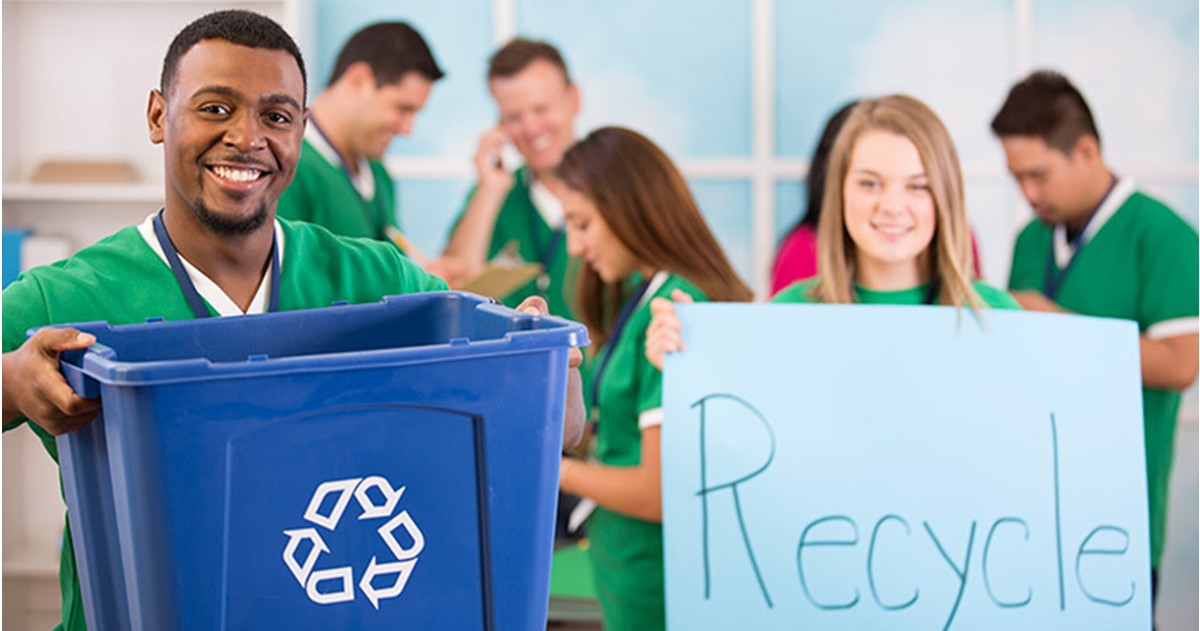
Crafting with recycled materials isn’t merely a hobby; it’s a conscious and impactful choice that bears an array of benefits beyond the realm of artistry. From reducing our carbon footprint to igniting personal satisfaction, this approach to creativity holds the potential to reshape our perspectives and contribute positively to both our lives and the environment.
- Environmental Stewardship
Perhaps the most palpable benefit of crafting with recycled materials is its direct impact on the environment. By repurposing discarded items, we actively participate in reducing the demand for new resources. This translates to fewer trees being felled, less energy consumption, and a diminished need for mining and manufacturing. With each upcycled creation, we inch closer to a circular economy where waste is minimized and resources are conserved.
- Financial Prudence
Crafting can sometimes entail costs, especially when purchasing new materials. However, engaging with recycled materials often proves to be a cost-effective alternative. Rather than investing in fresh supplies, we can create captivating pieces using items that might have otherwise ended up in landfills. This not only keeps our wallets happier but also underscores the notion that creativity doesn’t hinge on lavish expenditures.
- Unveiling Unique Expressions
Crafting with recycled materials is a celebration of individuality. No two pieces are identical, and this uniqueness stems from the inherent diversity of recycled materials. The idiosyncrasies carried by each discarded item contribute to the distinctive charm of the final creation. As artists, we embrace imperfections, weaving a narrative that carries the history and character of the materials into our art.
- Personal Fulfillment
The act of transforming what is often deemed as waste into a work of art is intrinsically gratifying. It feeds a sense of accomplishment that transcends the mere creation of an object. The knowledge that we’re contributing to a sustainable future while nurturing our creative instincts infuses a profound sense of purpose into our artistic endeavors.
- Fostering Creativity and Innovation
Working with recycled materials challenges us to think beyond the conventional. It encourages innovation and resourcefulness as we seek ways to repurpose, reimagine, and reintegrate materials into our projects. This mindset extends beyond crafting and can positively impact problem-solving skills in various aspects of life.
- Catalyst for Thoughtful Consumption
Crafting with recycled materials extends an invitation to reconsider our consumption patterns. It invites us to scrutinize what we discard and question whether certain items might serve a new purpose. This mindfulness ripples through our daily lives, prompting us to be more conscious consumers and reducing our contribution to the cycle of disposable culture.
- Environmental Education
Engaging in recycled crafting opens doors to conversations about sustainability and the environmental impact of our choices. It’s a tangible way to educate ourselves and others about the significance of waste reduction, resource conservation, and the role of creativity in fostering a greener world.
Conclusion
Crafting with recycled materials is a wonderful way to combine creativity, sustainability, and self-expression. From paper art to upcycled furniture, the possibilities are endless when it comes to turning “trash” into art. By embracing these techniques and ideas, you can not only create beautiful pieces that enhance your living space but also make a positive impact on the planet. So gather your recycled materials, let your imagination run wild, and embark on a crafting journey that’s both inspiring and environmentally conscious.
